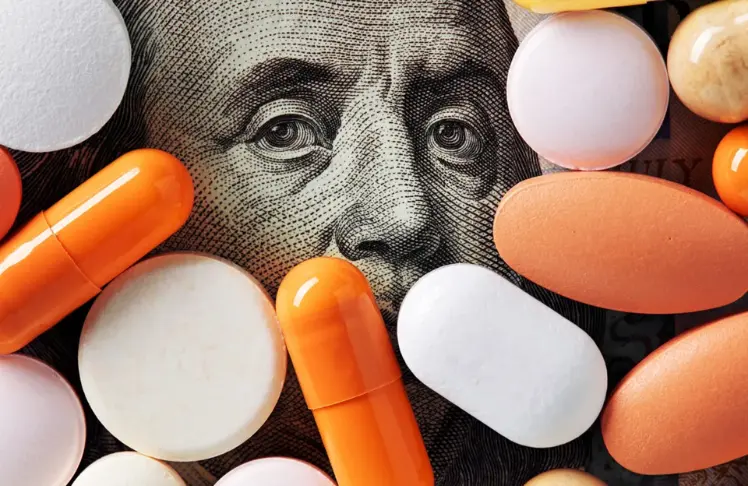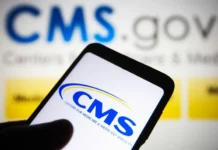
This is part two of “Life or Debt,” Word In Black’s drug price series, exploring the ways Black folks living with chronic disease are forced to manage an expensive health care system. Read the series.
We all need health care, but rarely do most people know the ins and outs of the system. At Word In Black, we’ve vigorously reported on health care inequities, mental health, and what needs to change to treat Black folks better. But we’re taking a deeper look at the injustices related to access to and the affordability of pharmaceutical drugs.
About 133 million Americans are living with at least one chronic illness. And, Black people are at a disproportionate risk for developing for certain diseases like hypertension, heart disease, and diabetes. A chronic disease diagnosis is often quickly followed by a treatment plan that includes prescription drugs.
In a 2023 KFF Health Tracking Poll, 36% of Black adults were more likely than white adults to say it is difficult for them to pay for prescription drugs. And Black and Hispanic adults were more likely to say they skipped or postponed health care they needed in the past 12 months due to cost.
For our newest series, Life or Debt, we’re focusing on diabetes medication. And in the words of Jason Nolden, a New Yorker living with Type 1 diabetes who I interviewed for the first story in this series, “Health care is something you need; it’s not a choice.”
That’s why in this guide, we’ll cover the history of drug pricing, how insurance functions in health care, and what makes prescription drugs for common chronic illnesses so expensive. We’ve also compiled a list of helpful resources to get cheaper diabetes drugs and organizations that are working to change policy.
How are drugs priced?
To be frank, there is a major lack of transparency in the way prescription drugs are priced. Pharmaceutical companies make and sell drugs, but negotiations happen with little to no oversight. Oftentimes, pharmaceutical companies point to research and development as the reason behind their list prices.
When a drug comes out, pharmaceutical companies’ price that drug based on what they feel its value is to an individual, Georges C. Benjamin, executive director of the American Public Health Association told Word In Black. Some argue that what they charge is reasonable, considering the investment in research to produce a drug.
“The problem is … it’s not reasonable, because if you can’t afford it, you can’t use it,” Benjamin says. “To have a drug that costs thousands of dollars, even if it saves their lives, if you don’t have (the money) it’s useless to you.”
Drug companies can also raise the price of their drugs above inflation rates, because they are unregulated. When pricing their drugs, pharmaceutical companies consider uniqueness and effectiveness of the drug, and competition from other companies.
And drugs that can reduce hospital trips, doctor visits, and expensive surgeries are usually priced higher because of the savings that offer customers in the long run, according to Investopedia. Drugs are also given a higher price if it can extend or even save someone’s life.
Pharmaceutical companies also typically raise the prices of their drugs in January to earn more revenue. The U.S. government is also not involved in setting prices. But insurance companies and the pharmacies that sell the prescriptions are responsible for the final price a customer will pay.
What are pharmacy benefit managers? And how does it intersect with drug rebates?
PBMs, are companies that manage prescription drug benefits on behalf of health insurers, Medicare Part D drug plans, large employers, and other payers, according to The Commonwealth Fund. And they negotiate with drug manufacturers and pharmacies to control drug spending. PBMs have a major behind the scenes role in determining total drug costs for insurers, determining patients’ access to medications, and deciding how much pharmacies are paid.
This matters because PBMs operate in the middle of the prescription drug distribution chain. One of their most notable functions is developing formularies or lists of covered medications on behalf of health insurance companies. Formularies will vary with each insurance company. So, a prescription drug covered on one plan, may not be covered on another.
PBMs use their purchasing power to negotiate rebates or discounts from drug manufacturers. Typically, drug manufacturer offers rebates for brand-name drugs to get preferred placement on the formularies of health insurance companies. As a result, this incentivizes patients to use the drug manufacturer’s brand name drug instead of the generic drug.
But rebates don’t directly lower patients’ prescription drug costs, according to KFF Health. What patients pay is based on the list price of a drug, regardless of any rebate or discount given to the PBM.
What role does health insurance coverage play in prescription drugs?
Most people have private health insurance, which includes employment-based coverage and individually purchased coverage. Medicare, different from private insurance, is the federal health insurance program that applies to Americans who are 65 or older, or living with a disability, or in end stage renal failure. Part A is hospital insurance, Part B is medical insurance, and Part D is prescription drug coverage.
Before the Affordable Care Act, enacted in 2010, about 20% of health insurance plans did not cover prescription medications. Health insurance plans that took effect in 2014 include prescription drug coverage on all individual and small-group health plans.
There are several five most common benefit designs that health plans use to cover prescription drugs, according to Verywell Health.
- Copay: this is the set amount you pay for prescriptions.
- Coinsurance: you pay a percentage of the prescription cost, and the insurance covers the rest.
- Prescription deductible: once the deductible is met, a copay or coinsurance applies.
- Integrated deductible: once the full deductible for both a medical and prescription deductible is met, a prescription copay or coinsurance applies.
- Out-of-pocket maximum: most plans after 2014 had to cap total out-of-pocket spending for in-network expenses.
There are also stand-alone drug coverage plans that work like medical insurance — you pay an annual premium, and when you go to the pharmacy either have a copay or coinsurance cost.
Also, each health insurer can develop their own formulary, which often includes procedures to limit or restrict certain medications. For example, before filling certain prescriptions, a health insurer will require prior authorization from your health care provider. And health insurance companies can deny a prescription even when a doctor wrote it in the best interest of their patient.
“Health insurance companies approve treatments, set co-pays, and price out with PBMs how much patients pay for drugs,” according to the American Medical Association. “Often, they decide coverage options based on what maximizes company profits.”
What’s being done to make prescription drugs more affordable?
In the next story in our Life or Debt series, I’ll detail the solutions and policies advocates are calling for to make insulin and other diabetes medication more affordable. Although the federal government set a $35 cap to insulin for Medicare Part D enrollees, the cap doesn’t apply to everyone else.
Insulin is not the only tool needed to care for diabetes. Those living with the chronic disease still need to pay for doctor’s visits, medical equipment, and specialized medical devices. It goes without saying, more needs to be done so Black folks don’t have to choose between their life and debt to care for chronic disease.
In the meantime, here is a short list of resources that we hope will be helpful to you, in your care of diabetes.
Resources:
- Eli Lilly and Company’s Lilly Diabetes Solution Center
- Novo Nordisk Inc.
- Sanofi’s Insulins VALyou Savings Program
- Financial Help for Diabetes Care
- Health Insurance Aid, American Diabetes Association
- Find a Diabetes Education Program
- T1International is a non-profit led by people with and impacted by type 1 diabetes for people with type 1 diabetes.















